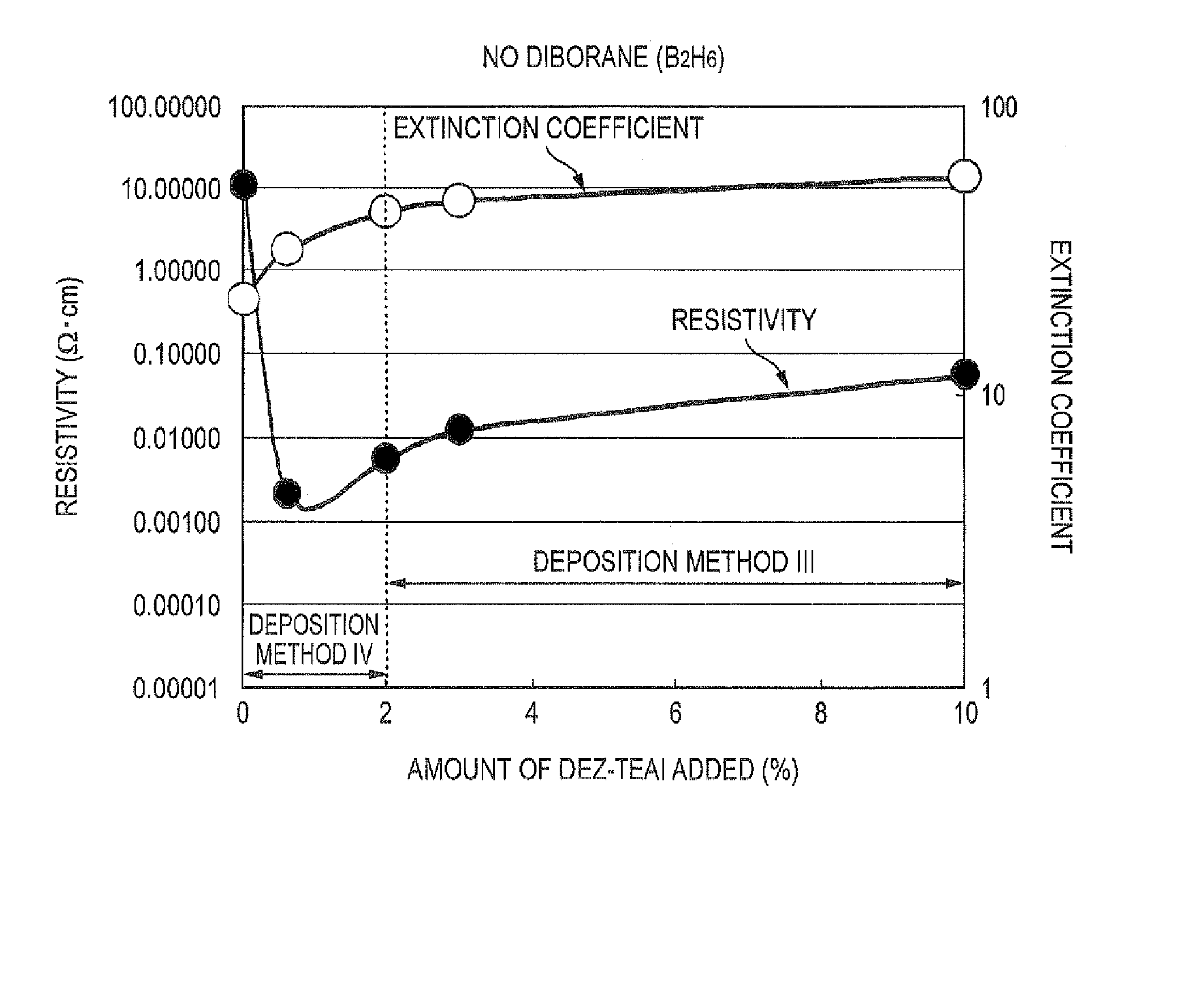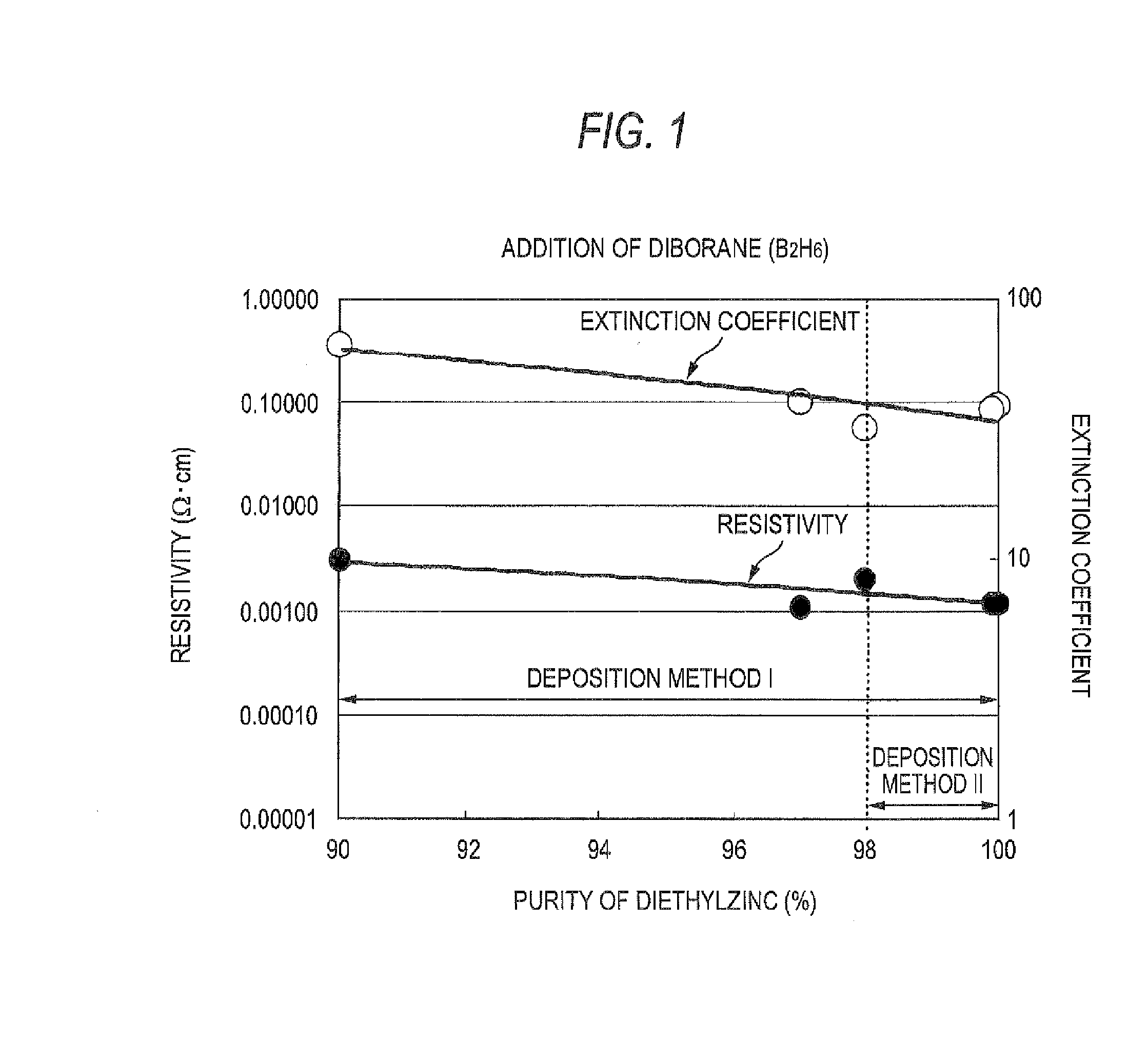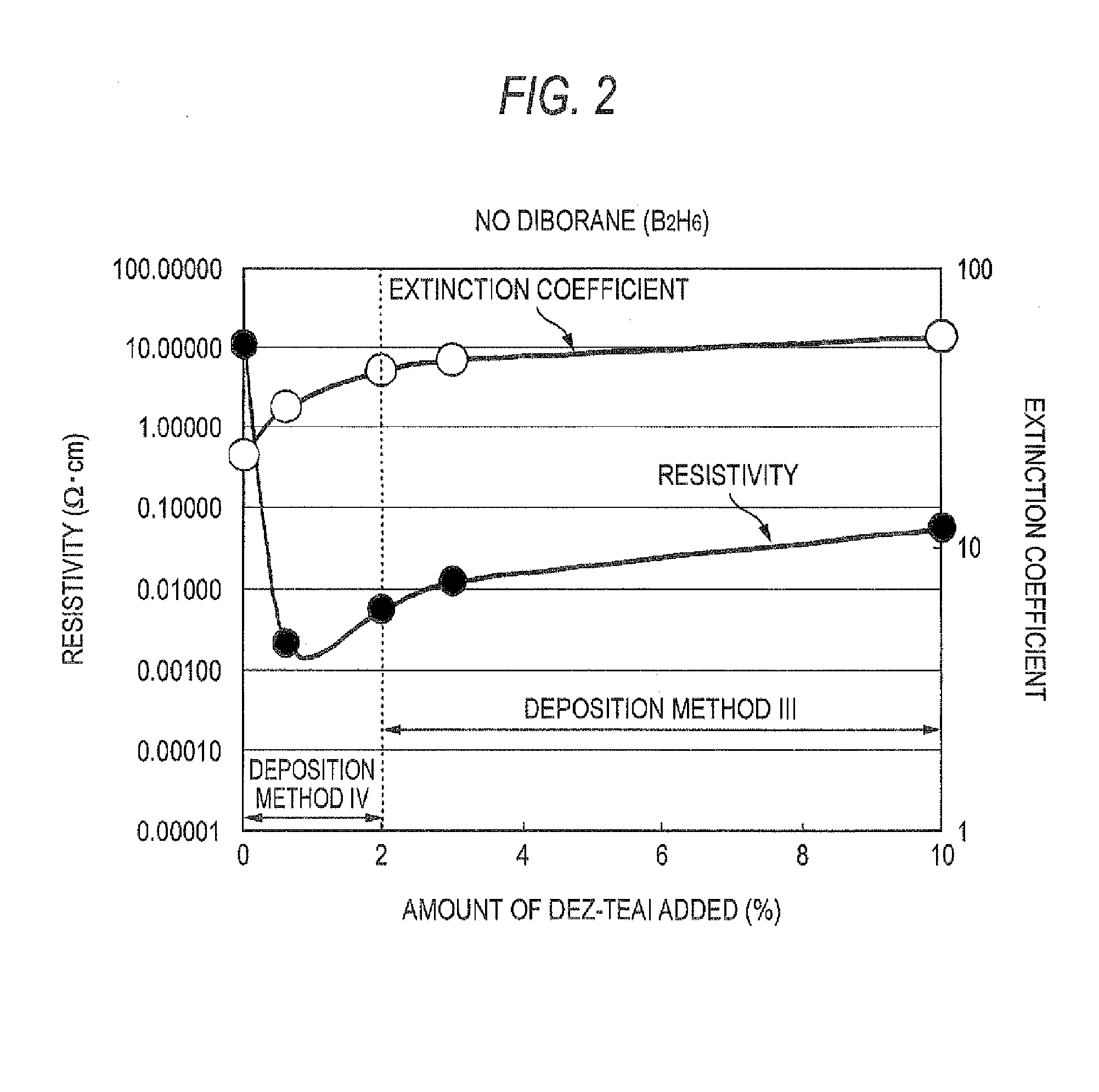Process For Producing Zno Transparent Conductive Film By Mocvd (Metal-Organic Chemical Vapor Deposition) Method
- Summary
- Abstract
- Description
- Claims
- Application Information
AI Technical Summary
Benefits of technology
Problems solved by technology
Method used
Image
Examples
Embodiment Construction
[0016] The invention relates to processes for producing a ZnO transparent conductive film in which low-purity diethylzinc (Zn(C2H5)2) is used as a raw material to produce a ZnO transparent conductive film by the MOCVD (metal-organic chemical vapor deposition) method.
[0017] In general, in the case of forming a ZnO transparent conductive film by the chemical vapor deposition method (CVD method), the diethylzinc to be used as an organozinc-compound raw material therefor is of the kind called semiconductor grade, which has been highly purified and has a purity of 99.999-99.9999%. In the processes of the invention, however, use is made of low-purity diethylzinc which has been lowly purified, e.g., diethylzinc having a purity of 90% or higher or diethylzinc having a purity of 98% or higher.
[0018] A process of the invention, which is for forming a ZnO transparent conductive film by the MOCVD (metal-organic chemical vapor deposition) method, comprises using diethylzinc of 90-99.99% as a r...
PUM
| Property | Measurement | Unit |
|---|---|---|
| Temperature | aaaaa | aaaaa |
| Temperature | aaaaa | aaaaa |
| Fraction | aaaaa | aaaaa |
Abstract
Description
Claims
Application Information
 Login to View More
Login to View More - R&D
- Intellectual Property
- Life Sciences
- Materials
- Tech Scout
- Unparalleled Data Quality
- Higher Quality Content
- 60% Fewer Hallucinations
Browse by: Latest US Patents, China's latest patents, Technical Efficacy Thesaurus, Application Domain, Technology Topic, Popular Technical Reports.
© 2025 PatSnap. All rights reserved.Legal|Privacy policy|Modern Slavery Act Transparency Statement|Sitemap|About US| Contact US: help@patsnap.com



